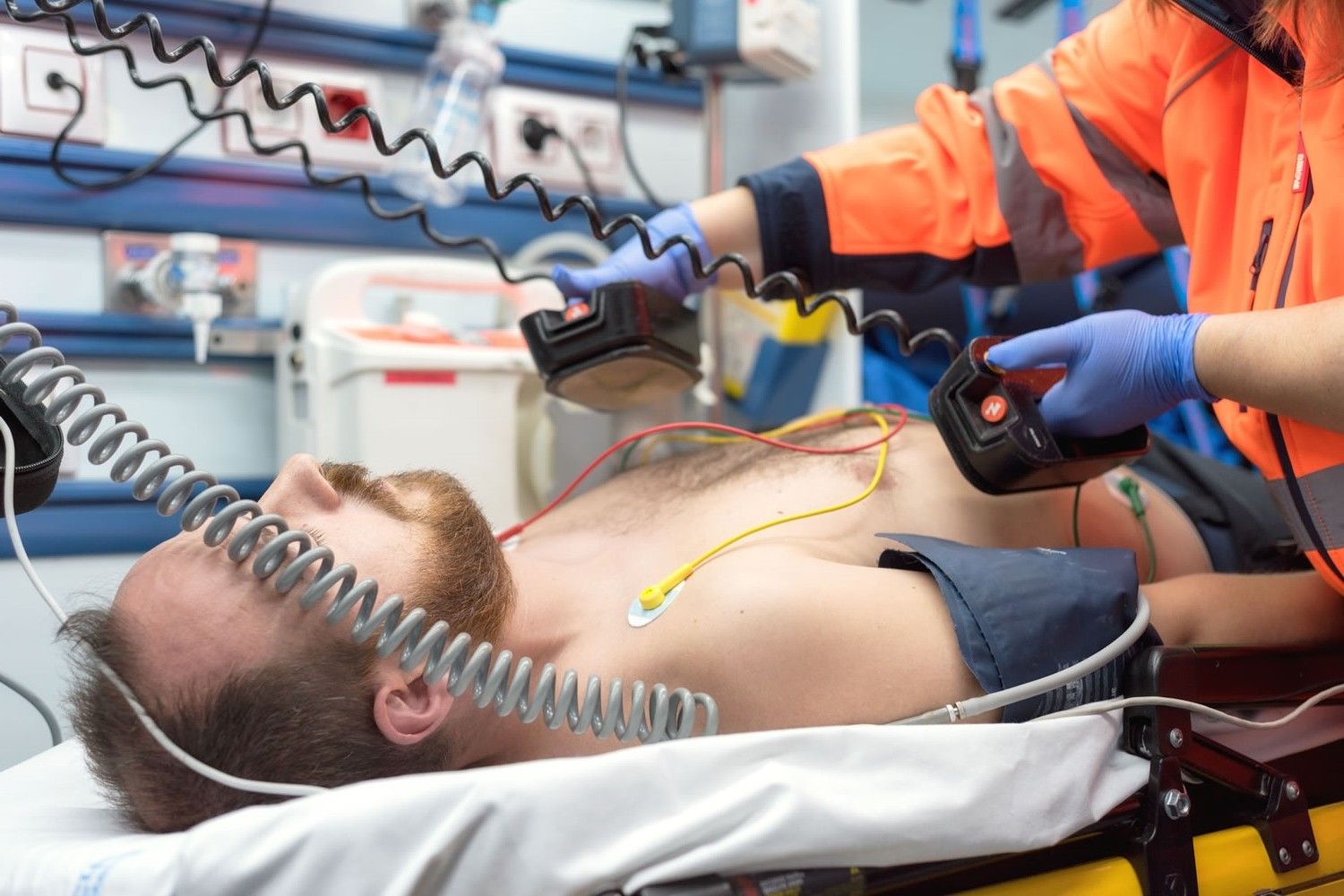
Defibrillators are life-saving devices that can make the difference between life and death during sudden cardiac arrest. But what exactly do they do, and how do they work? These machines deliver a dose of electric current to the heart, helping to restore a normal rhythm. Did you know that defibrillators come in various types, including automated external defibrillators (AEDs) that even non-medical folks can use? From hospitals to airports, these devices are becoming more common in public places. Understanding how they function and their importance can empower you to act swiftly in emergencies. Ready to learn more? Let's dive into 31 fascinating facts about defibrillators!
What is a Defibrillator?
A defibrillator is a medical device that delivers a dose of electric current to the heart. This shock can help restore a normal heartbeat in cases of life-threatening arrhythmias or cardiac arrest. Here are some fascinating facts about defibrillators.
-
The first defibrillator was invented in 1930 by Dr. Albert Hyman. He called it a "cardiac pacemaker."
-
Modern defibrillators are portable and can be found in public places like airports, malls, and schools.
-
Automated External Defibrillators (AEDs) are designed for use by non-medical personnel. They provide step-by-step voice instructions.
-
Defibrillators can be used on both adults and children. Pediatric pads or settings adjust the shock level for younger patients.
-
The American Heart Association recommends that defibrillators be used within 3-5 minutes of a cardiac arrest for the best chance of survival.
How Does a Defibrillator Work?
Understanding how a defibrillator functions can demystify its life-saving capabilities. Here’s a breakdown of its operation.
-
Defibrillators work by delivering a high-energy shock to the heart through the chest wall.
-
The shock interrupts the chaotic electrical activity in the heart, allowing it to re-establish a normal rhythm.
-
AEDs analyze the heart's rhythm and determine if a shock is needed. They will not deliver a shock if it's not necessary.
-
Some defibrillators have a built-in ECG (electrocardiogram) to monitor the heart's activity before and after the shock.
-
The energy level of the shock can be adjusted based on the patient's condition and the type of defibrillator used.
Types of Defibrillators
Different situations require different types of defibrillators. Here are the main types you might encounter.
-
Manual External Defibrillators are used by healthcare professionals. They require the operator to decide when and how much shock to deliver.
-
Automated External Defibrillators (AEDs) are user-friendly and designed for public use.
-
Implantable Cardioverter Defibrillators (ICDs) are surgically placed inside the body and continuously monitor the heart.
-
Wearable Cardioverter Defibrillators (WCDs) are worn outside the body and provide protection for patients at risk of sudden cardiac arrest.
-
Internal Defibrillators are used during open-heart surgery to directly shock the heart.
Importance of Defibrillators in Public Places
Having defibrillators in public places can make a significant difference in emergency situations. Here’s why.
-
Sudden cardiac arrest can happen to anyone, anywhere, at any time.
-
Immediate use of a defibrillator can double or triple the chances of survival.
-
Many countries have laws requiring AEDs in public places like gyms, schools, and sports arenas.
-
Public access defibrillation programs train ordinary people to use AEDs, increasing the number of potential lifesavers.
-
Some AEDs are equipped with GPS, allowing emergency services to locate the nearest device quickly.
Training and Awareness
Knowing how to use a defibrillator is crucial. Here’s what you need to know about training and awareness.
-
Basic CPR and AED training can be completed in a few hours.
-
Many organizations offer free or low-cost training sessions.
-
Some defibrillators come with built-in training modes for practice.
-
Awareness campaigns aim to educate the public about the importance of defibrillators.
-
Schools often include CPR and AED training in their health education curriculum.
Technological Advancements
Defibrillators have come a long way since their invention. Modern technology continues to improve their effectiveness and ease of use.
-
Some defibrillators have Wi-Fi connectivity to send data to medical professionals in real-time.
-
Voice prompts and visual cues guide users through the defibrillation process.
-
Newer models are more compact and lightweight, making them easier to carry and store.
-
Some defibrillators can perform self-checks to ensure they are always ready for use.
-
Advances in battery technology have extended the lifespan and reliability of defibrillators.
-
Research is ongoing to develop even more advanced defibrillators, including those that can predict and prevent cardiac events before they occur.
Defibrillators: Life-Saving Devices
Defibrillators are crucial in emergencies. They deliver electric shocks to restore normal heart rhythms during cardiac arrest. These devices come in various types, including AEDs, ICDs, and manual defibrillators, each serving unique purposes. AEDs are user-friendly, often found in public places, and can be operated by anyone with minimal training. ICDs are implanted in patients at high risk of sudden cardiac arrest, providing continuous monitoring and automatic shocks when needed. Manual defibrillators are used by healthcare professionals in hospitals and ambulances.
Knowing how to use a defibrillator can save lives. Many organizations offer CPR and AED training, empowering individuals to act swiftly during emergencies. Regular maintenance and prompt access to these devices are essential for their effectiveness. By understanding and utilizing defibrillators, we can significantly increase survival rates and make a difference in critical moments. Stay informed, stay prepared, and you might just save a life.
Was this page helpful?
Our commitment to delivering trustworthy and engaging content is at the heart of what we do. Each fact on our site is contributed by real users like you, bringing a wealth of diverse insights and information. To ensure the highest standards of accuracy and reliability, our dedicated editors meticulously review each submission. This process guarantees that the facts we share are not only fascinating but also credible. Trust in our commitment to quality and authenticity as you explore and learn with us.
